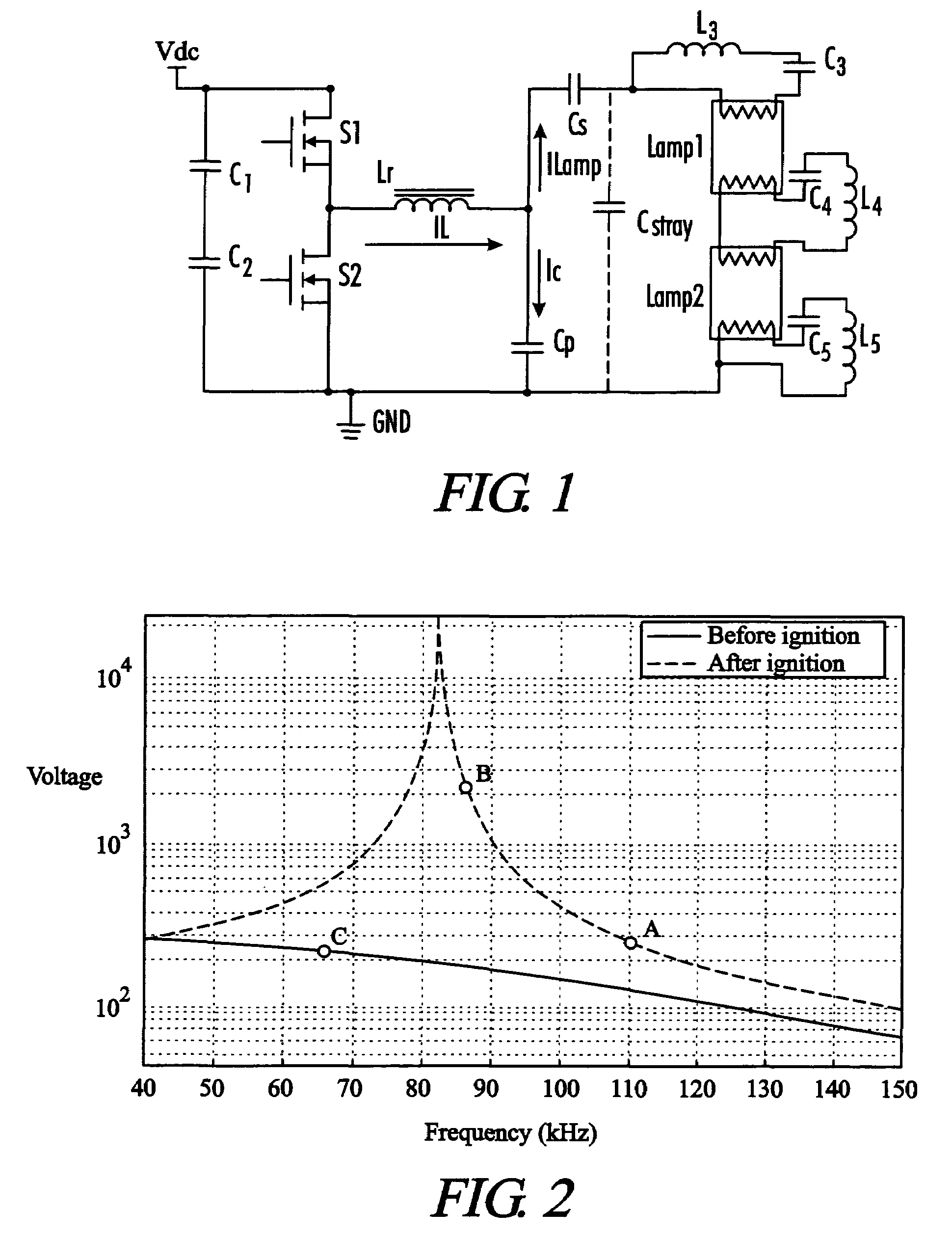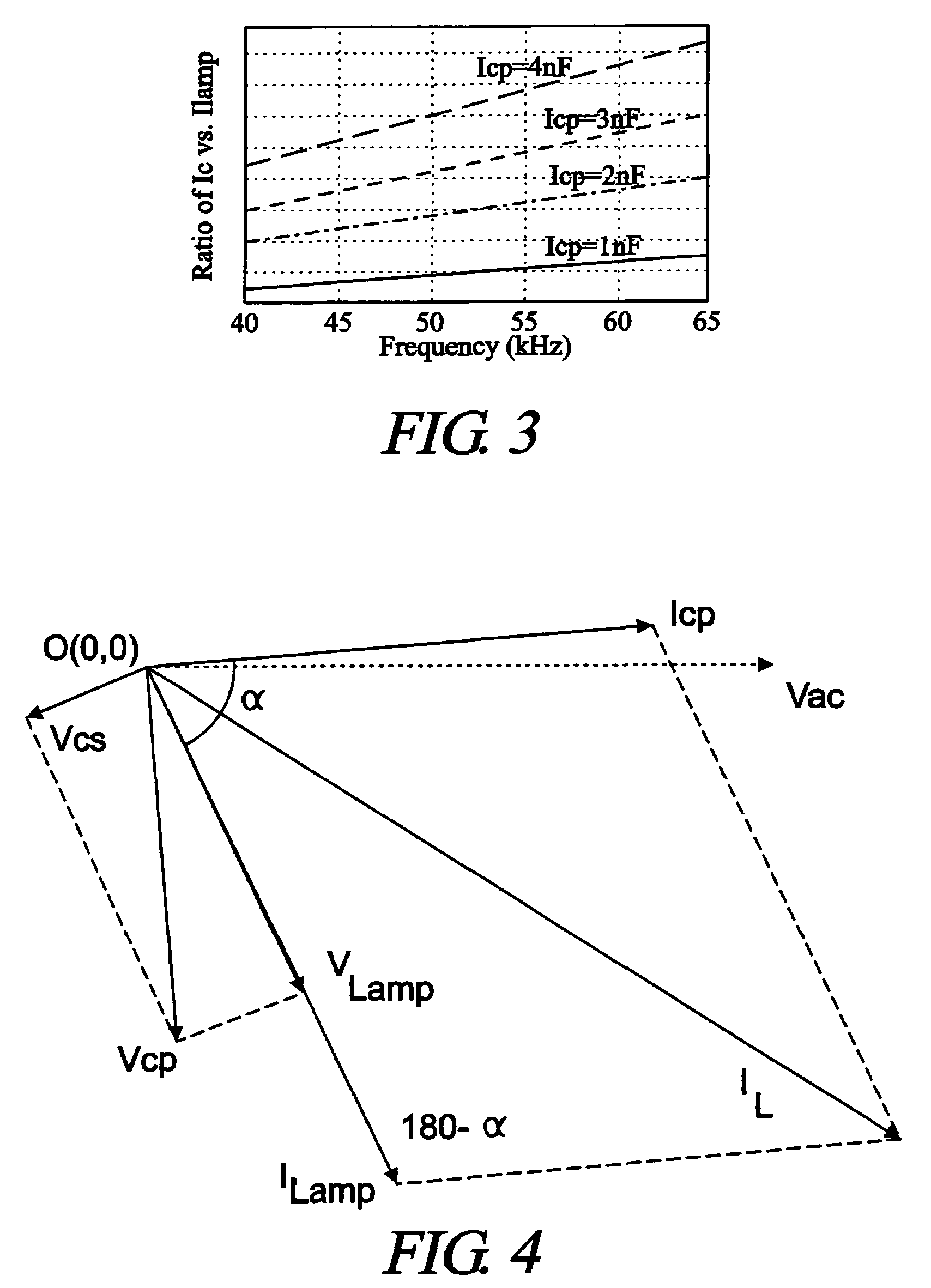Electronic ballast with adaptive lamp preheat and ignition
a technology of electronic ballasts and lamp preheating, applied in the field of electronic ballasts, can solve the problems of increasing core losses in addition to conduction losses, affecting the ability of electronic ballasts to work properly, etc., to achieve the effect of improving the ability of electronic ballasts
- Summary
- Abstract
- Description
- Claims
- Application Information
AI Technical Summary
Benefits of technology
Problems solved by technology
Method used
Image
Examples
Embodiment Construction
[0032]The microcontroller has been used in the prior art to control certain functions in an electronic ballast, such as lamp detection, re-lamping, and multiple striking. However, prior art use of microcontrollers has not resulted in improvement of inverter performance during the lamp preheat and ignition phases.
[0033]In coventional microcontroller-based electronic ballasts, the microcontroller generates the frequency signal for the ballast. For example, in the ballast of FIG. 1, the frequency of the FET (S1 and S2) gate signals is controlled by the microcontroller (not shown). In the present invention as shown in FIG. 8, the microcontroller U1 also samples the lamp voltage, which is proportional to the voltage across the resonant capacitor Cp. This sampling is done using a simple analog filter circuit comprising resistors and capacitors. The output of the filter circuit is coupled to an analog input pin on microcontroller U1. An A / D converted integral to microcontroller U1 converts...
PUM
 Login to View More
Login to View More Abstract
Description
Claims
Application Information
 Login to View More
Login to View More - R&D
- Intellectual Property
- Life Sciences
- Materials
- Tech Scout
- Unparalleled Data Quality
- Higher Quality Content
- 60% Fewer Hallucinations
Browse by: Latest US Patents, China's latest patents, Technical Efficacy Thesaurus, Application Domain, Technology Topic, Popular Technical Reports.
© 2025 PatSnap. All rights reserved.Legal|Privacy policy|Modern Slavery Act Transparency Statement|Sitemap|About US| Contact US: help@patsnap.com



